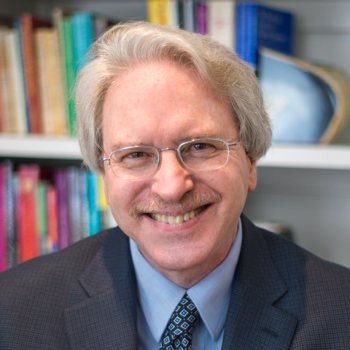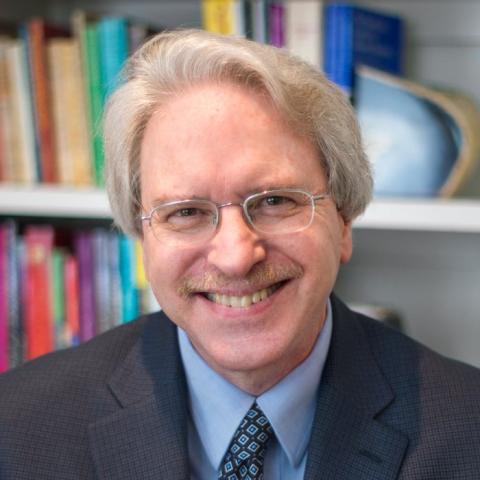A MLK Day Reflection

Details
A message from Haverford President Kim Benston on the occasion of Martin Luther King Jr. Day
We are caught in an inescapable network of mutuality, tied in a single garment of destiny. Whatever affects one directly, affects all indirectly.
--Dr. Martin Luther King, Jr., “Letter from Birmingham Jail,” 1963
***
Some years ago a famous novelist died. Among his papers was found a list of suggested story plots for future stories, the most prominently underscored being this one: “A widely separated family inherits a house in which they have to live together.” This is the great new problem of mankind. We have inherited a big house, a great “world house” in which we have to live together – black and white, Easterners and Westerners, Gentiles and Jews, Catholics and Protestants, Moslem and Hindu, a family unduly separated in ideas, culture, and interests who, because we can never again live without each other, must learn, somehow, in this one big world, to live with each other.
--Dr. Martin Luther King, Jr., Nobel Prize Lecture, December 11, 1964
Fifty years ago this month, I heard Dr. Martin Luther King, Jr. speak at the launch of his Chicago Freedom Movement Campaign for fairness in housing, education, and employment. Dr. King’s blend of argumentative clarity and moral passion was powerful in itself; but what further dazzled me was his capacity to galvanize a diverse audience into a unified community “bending its arc toward justice.” I saw the adults around me departing inflamed by what civil rights preachers called “fire in the bones”: the zeal for equity, righteousness, and decency.
After encountering much resistance, the Freedom Movement Campaign in the summer of 1966 wrested a promise from city authorities for improved public housing. But by the spring of 1967, hopes were waning in the face of neglect and betrayal, and Dr. King trenchantly observed that “it appears that for all intents and purposes, the public agencies have … given credence to [those] who proclaim the housing agreement a sham and a batch of false promises.” The Campaign continued, now fueled by gritty determination more than bright-eyed idealism.
And so I learned a second lesson from the King-led movement for civil and human rights: that the moral resonance of the “dream” was inseparable from an anxious awareness of continuing injustice. For the dream of equality to be realized, hope must sustain itself through recurring trials.
Dr. King’s intense effort to preserve hope in the face of despair struck me anew while I was rereading his remarkable “Letter from Birmingham Jail.” Written in 1963 while Dr. King was serving a jail sentence for participating in demonstrations in Birmingham, Alabama, his letter is formally addressed to eight prominent white Alabama clergymen who had drafted an open letter accusing Dr. King of unnecessarily inciting civil unrest rather than “waiting” for societal redress of bigotry and oppression. Written in solitary confinement, “Letter from Birmingham Jail” is tinged by pessimism, anger, and fear, but it crackles also with the vehemence of a prophet challenging his people—and all people—to heal the breach between idealism and actuality. Just as today we hear activists passionately reminding us that we don’t in fact live in a “post-racial” society but rather occupy a land beset by inequities including racialized mass incarceration, sanctioned brutality, and income polarization, so Dr. King reminded his audience that the modern America of his time had not yet “reached [its] goal of freedom.” By turning such disappointment into renewed resolve, Dr. King’s masterful composition was to become an act of both political and personal regeneration.
“Letter from Birmingham Jail” went largely unnoticed in the months after its composition, until its publication by the American Friends Service Committee. After this Quaker organization published it, the letter became the launching pad for Dr. King’s renewed prominence, ultimately making possible his central role in the pivotal March on Washington in August of 1963 (where he delivered his epochal “I Have a Dream” speech). But the link between Quakerism and Dr. King’s impact goes much deeper than the important role of AFSC in the dissemination of the momentous “Letter”––and, in fact, embraces Haverford College. The story of this connection––involving the African-American minister, educator, and religious leader Howard Thurman and the Haverford Quaker historian, philosopher, and theologian Rufus Jones––illuminates how Dr. King’s unwavering dedication to a truly just community has a poignant contemporary relevance for Haverford College.
Dr. King’s extraordinary ability to fuse inner strength with social vision had been nurtured toward fullness by Reverend Howard Thurman, the first African-American Dean of Boston University’s Marsh Chapel, and founder of the first integrated, interfaith religious congregation in the United States (San Francisco’s Church for the Fellowship of All Peoples). This influential theologian authored numerous books on the relation between nonviolent social change and individual spiritual rejuvenation, including the widely read Jesus and the Disinherited, which Dr. King carried with him during the 1955 Montgomery bus boycott. It was Rev. Thurman who showed Dr. King, during one of the most despairing moments of his life (after he was shot by a deranged woman in 1958), the path toward becoming a “redemptive dissenter.”
And how had Rev. Thurman himself been nurtured? Raised by his grandmother, an ex-slave from whom he caught “the contagion of religion” infused with fierce racial pride (“You are not slaves. You are children of God,” she recalled hearing the black preacher intone on the plantation when she was a child), and educated at Morehouse College (during which time he became close to King family), Rev. Thurman began his career as a pastor and was then profoundly influenced by a book by Haverford Professor Rufus Jones. This autobiographical meditation, Finding the Trail of Life, which laid forth the power of mystical spirituality to address the crises of poverty, war, and oppression, inspired Rev. Thurman to apply to study with Prof. Jones at Haverford in 1929. On learning that the College did not admit African-American students, Rev. Thurman persuaded Prof. Jones to offer him a private unofficial tutorial, an experience that Rev. Thurman later described in his autobiography With Head and Heart as a “watershed from which flowed much of the thought and endeavor to which I was to commit the rest of my working life.” Advancing Prof. Jones’s view of spiritual self-understanding as the wellspring of social action, Rev. Thurman became a close spiritual advisor to such luminaries of the civil rights movement as Jesse Jackson, Vincent Harding, Whitney Young, and Vernon Jordan.
This, again, is the Reverend Thurman who uplifted Dr. King in a time of crisis, setting his inner compass toward social transformation. In so doing, he extended the teachings of Professor Jones, revealing to Dr. King a “common ground” on which the “disinherited” and the socially favored might seek mutual deliverance. Thus, we can trace an organic psychological, political, and theological thread from perhaps Haverford’s most profound developer of Quaker thought to arguably our culture’s most profound political activist and social visionary.
And yet this encounter presents us with another dual lesson, for the College makes its appearance in this intellectual lineage as both a catalyst for social change and a stolid adherent to the status quo (the College would not grant a degree to an African-American until Paul Moses graduated over two decades later). The mutually enriching work of Rev. Thurman and Prof. Jones occurred in a realm somehow both inside and outside the academy––and both inside and outside the most vital concerns of American society itself. “During the entire time with Rufus,” Rev. Thurman tells us, “the issue of racial conflict never arose, for the fact of racial differences was never dealt with at the conscious level. The ethical emphasis of his interpretations of mystical religion dealt primarily with war and the poverty and hunger of whole populations, and the issues arising from the conflict between nations. Paradoxically, in his presence, the specific issues of race with which I had been confronted all my life as a black man in America seemed strangely irrelevant. I felt that somehow he transcended race; I did so, too, temporarily, and in retrospect, this aspect of my time with him remains an enigma.”
That enigma persists for us. How did seemingly pertinent "issues of race” manage to acquire a “strange irrelevance” during this collaboration between a professor and a student? Did that irrelevance constitute “transcendence” of a social impasse by professor and student alike as they enacted a leap onto "common ground"? Or was it inevitable that such irrelevance should come back to haunt them—and us—suggesting "in retrospect" the inability to confront an elemental institutional wrong? Like Rev. Thurman, we see the interaction with Prof. Jones shrouded in a haze of ambiguity.
Thus, we may celebrate Haverford College’s little-known role in the genealogy of spiritual and social commitment that shaped Martin Luther King, Jr. for leadership in the civil rights movement––but, at the same time, we must ponder the College’s complex relationship to the struggle for fully realized justice. That complexity is very much alive today as we consider how our community can transcend the tensions of the world while simultaneously giving shared attention to their effects on us.
While we continually hope that our efforts here at Haverford inspire lives that speak, we must remain on guard against complacency, and against obliviousness. In Dr. King’s and Rev. Thurman’s perseverance we hear a summons to the work of improving our life together in all its aspects—teaching and learning; working and playing; leading and serving; living and dreaming—so that we can say, in Dr. King’s words, that we dwell together in the “world house” of our common inheritance, bound each to each in a “network of mutuality.”




